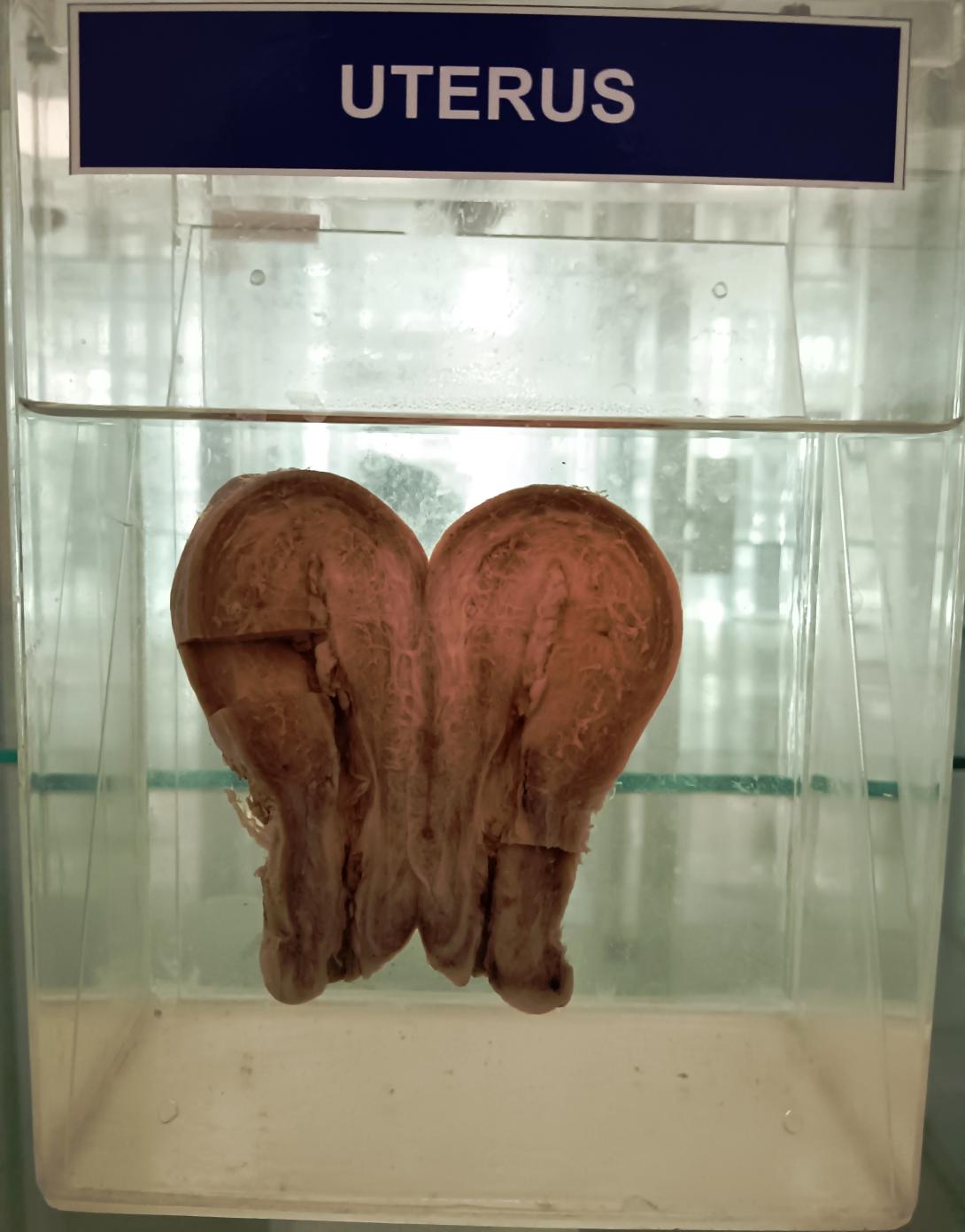The uterus (from Latin uterus, plural uteri) or womb (/wuːm/) is the organ in the reproductive system of most female mammals, including humans, that accommodates the embryonic and fetal development of one or more embryos until birth. The uterus is a hormone-responsive sex organ that contains glands in its lining that secrete uterine milk for embryonic nourishment.
In the human, the lower end of the uterus is a narrow part known as the isthmus that connects to the cervix, leading to the vagina. The upper end, the body of the uterus, is connected to the fallopian tubes, at the uterine horns, and the rounded part above the openings to the fallopian tubes is the fundus. The connection of the uterine cavity with a fallopian tube is called the uterotubal junction. The fertilized egg is carried to the uterus along the fallopian tube. It will have divided on its journey to form a blastocyst that will implant itself into the lining of the uterus – the endometrium, where it will receive nutrients and develop into the embryo proper and later fetus for the duration of the pregnancy.
In the human embryo, the uterus develops from the paramesonephric ducts which fuse into the single organ known as a simplex uterus. The uterus has different forms in many other animals and in some it exists as two separate uteri known as a duplex uterus.
In medicine, and related professions the term uterus is consistently used, while the Germanic-derived term womb is commonly used in everyday contexts. Events occurring within the uterus are described with the term in utero.
Structure[edit]
Different regions of the uterus displayed and labelled using a 3D medical illustration
In humans the uterus is located within the pelvic region immediately behind and almost overlying the bladder, and in front of the sigmoid colon. The human uterus is pear-shaped and about 7.6 cm (3.0 in) long, 4.5 cm (1.8 in) broad (side to side), and 3.0 cm (1.2 in) thick.[1][2] A typical adult uterus weighs about 60 grams. The uterus can be divided anatomically into four regions: the fundus – the uppermost rounded portion of the uterus above the openings of the fallopian tubes,[3] the body, the cervix, and the cervical canal. The cervix protrudes into the vagina. The uterus is held in position within the pelvis by ligaments, which are part of the endopelvic fascia. These ligaments include the pubocervical ligaments, the cardinal ligaments, and the uterosacral ligaments. It is covered by a sheet-like fold of peritoneum, the broad ligament.[4]
Layers[edit]
Uterine wall thickness (cm)[5]
Location
Mean (mm)
Range (mm)
Anterior wall
23
17 - 25
Posterior wall
21
15 - 25
Fundus
20
15 - 22
Isthmus
10
8 - 22
Vertical section of mucous membrane of human uterus
The uterus has three layers, which together form the uterine wall. From innermost to outermost, these layers are the endometrium, myometrium, and perimetrium.[6]
The endometrium is the inner epithelial layer, along with its mucous membrane, of the mammalian uterus. It has a basal layer and a functional layer; the functional layer thickens and then is shed during the menstrual cycle or estrous cycle. During pregnancy, the uterine glands and blood vessels in the endometrium further increase in size and number and form the decidua. Vascular spaces fuse and become interconnected, forming the placenta, which supplies oxygen and nutrition to the embryo and fetus.[7][8]
The myometrium of the uterus mostly consists of smooth muscle. The innermost layer of myometrium is known as the junctional zone, which becomes thickened in adenomyosis.[9]
The perimetrium is a serous layer of visceral peritoneum. It covers the outer surface of the uterus.[10]
Surrounding the uterus is a layer or band of fibrous and fatty connective tissue called the parametrium that connects the uterus to other tissues of the pelvis.
Commensal and mutualistic organisms are present in the uterus and form the uterine microbiome.[11][12][13][14]

